 & Telegram
& Telegram  Channel
Channel  & Telegram
& Telegram  Channel
Channel 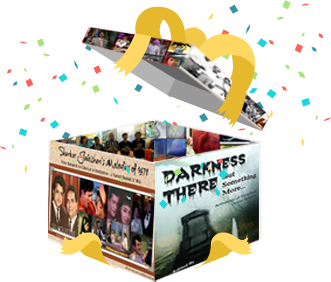
An Independence Day celebration by Ratnottama Sengupta
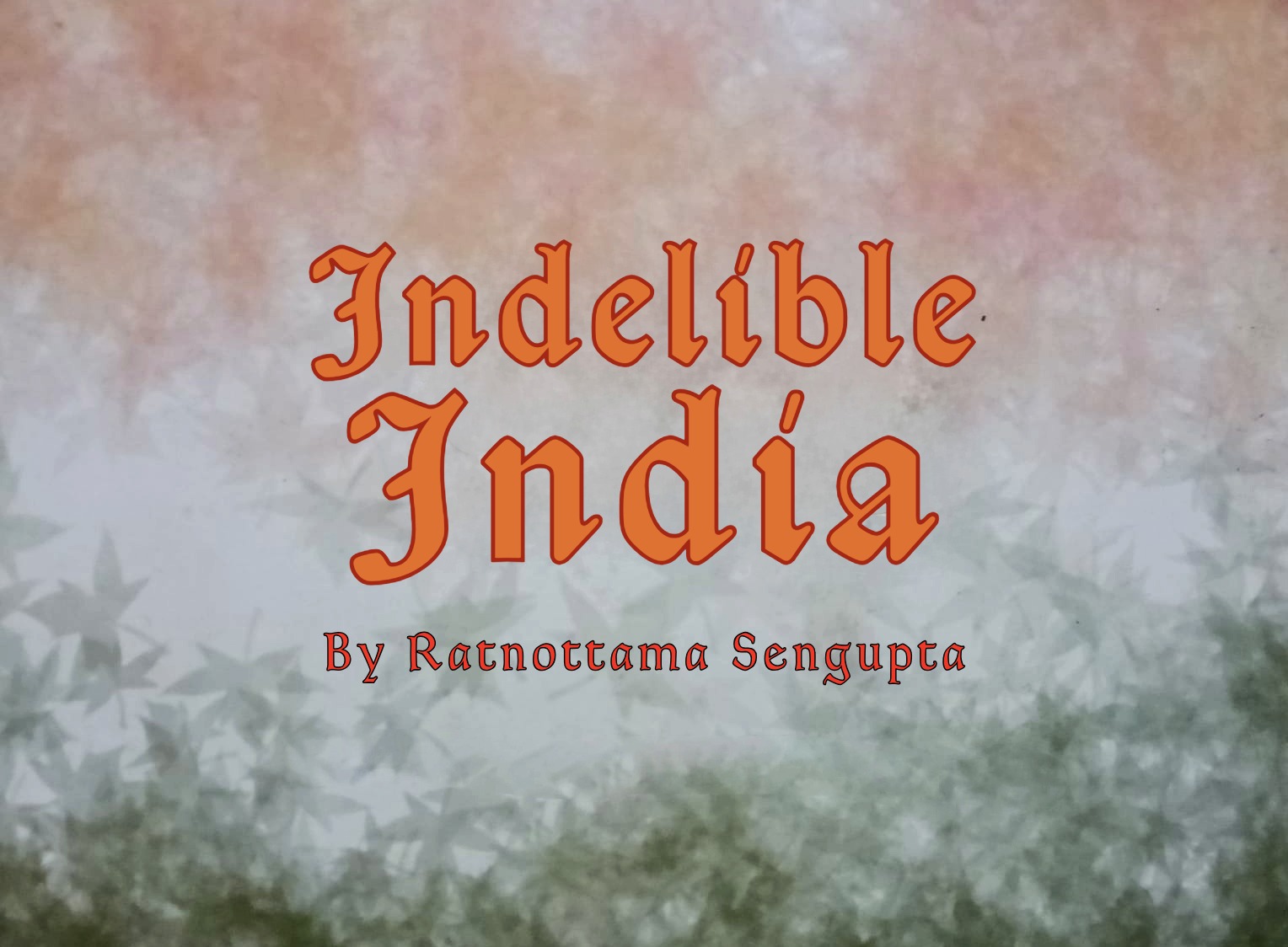
On August 15, 2025 India turns 78. But when did the civilization blow out 5000 candles? For, centuries have not erased the concept that is India. What is it that survives when empires change and boundaries get altered? What makes India tick despite poverty, illiteracy, ill health? Is it spirituality, or Kamasutra? Who becomes our hero, and why do we get wiped out of World Cups?
Indians are often described as a ‘breed apart’? Are we? Yes, because of the complexity that constitutes India. Here the streets are teeming with a headcount of a billion and more – 143.8 crore in 2023, to be precise – and a pantheon of 33-crore multi-headed, multi-tiered deities. If the multilingual society makes this soil unique, it also makes the concept of Indianness intangible. Yet, who can deny that even as India moved on to become the world’s largest democracy, with a lady from the Santhal tribe as its first citizen, we retained a definite identity as a people.
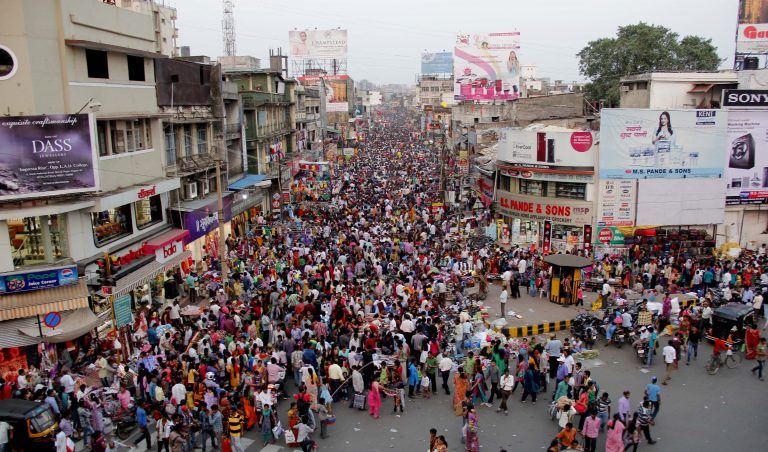
Here the streets are teeming with a headcount of a billion and more (Pic: Wikimedia Commons)
Of late, we hear that we are the fastest-growing economy. According to UN reports, India is currently experiencing the fastest economic growth among the major economies of the world. According to GDP estimates based on market exchange rates, India was the fifth largest economy from 2021. Projections for this fiscal year expect GDP to grow by 6.3 percent. Consequently, IMF ranks India as the fourth largest economy, after USA, China and Germany. And by 2028? It is expected to rise a notch higher. Deep within we know we belong up there. So why aren’t we? Because the material attracts us but does not absorb us. India will not be America because our psyche does not view a three-car garage as the be-all of existence.
Is our ‘sab chalta hai,’ everything goes, attitude our Achilles’ heel?
“No,” says filmmaker Goutam Ghose, “we don’t get regimented because of this.” From Confucius to Mao, the Chinese have been regimented. We have not been, because of this philosophy of equipoise that possibly grows out of the doctrine of Impermanence. ‘This too shall pass!’ – we know. This gives us the strength to tide over disasters, be they tsunamis or earthquakes, floods or famine, riots or Partition.
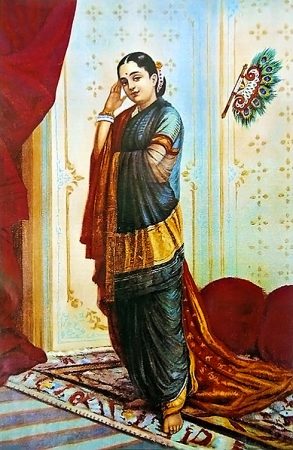
Portrait of the courtesan Vasanthasena, famously depicted in Śūdraka’s Sankrit play Mṛcchakaṭika (The Little Clay Cart) – Raja Ravi Varma’s Vasanthasena (Oleographic print)
Something else sees us through sickness and health: the Great Indian Family. Time was when you were what your family was. Today a family might not be to have and to hold, for better, for worse. The age-old system of three or more generations under one roof was once the high point of our social, moral and political fabric as evinced by the epics Ramayan and Mahabharat. But this system that was common in most Asia and parts of Africa and Latin America too, is under strain as the metros are going the nucleus way. Still, the institution in transition is amongst our strength. Even today my friend Shireen flies to Dubai when her daughter gives birth. Even today my friends and cousins, Shibani and Gopa, Eshani and Shyamali all go to the States to be with their grandchildren. Even today Indians return to their roots so that their parents may not die alone. “Parents are to die for,” they still say.
What is not in our forte is a sense of humour. We have wit but humour evades us. Clearly we have not derived the self-deprecatory humour of our erstwhile rulers. Forget irreverence – we cannot even stand satire. Yet, not so long ago, a train ride with former railway minister Laloo Prasad had revealed that the vernacular language is steeped in a sense of humour that was native to Birbal, Mulla Naseeruddin, the Vidushaks of Kalidasa’s Vikramorvashiyam and Shudraka’s Mricchakatikam, to Bhanu Goenda and Jahar Assistant on the Bengali screen, as to Johnnie Walker and Mehmood in Bollywood.
Like humour, sex is something we do not wear on our sleeves. Yes, the Indian sense of decorum does not permit exhibitionism. Kissing is a strict no-no on the streets and seldom encouraged even on our screens, big or small. Does it mean we have no appreciation of sensuality? So how are Khajuraho and Konark still around? Or Bipasha and John?

Khajuraho (Pic: Airunp CC BY-SA 2.5 via Wikimedia Commons)
Without batting an eyelid we can count Spirituality among the prime features of Indelible India. The land of Buddha and Mahavir, Nanak and Krishna has been home to Muslims, Christians, Parsis and Jews too. In recent history religion may have divided more than united us. Again, a close look reveals that religious institutions divide people, not religion. Bhakti Movement united people across the length, breadth and ranks; so did Sufism. Institutions divide so that they can rule – and the only way to counter their fanaticism is to rekindle the belief that every religion is just another path to spiritual well-being.
That’s what Ramakrishna Paramhans (1836-1886) said. That is why, nearly 150 years after his passing, he is the favourite Indian for countless Indians. For several others, it is Mahatma Gandhi, or the Eternal Bard, Tagore. One redrafted the philosophy of Ahimsa; the other combined the best of European Renaissance with Indian heritage. For many others there is Swami Vivekananda who had astounded the World Parliament of Religion in Chicago by embracing all as “Brothers and Sisters of America!” and who continues to inspire all with his exultation, “Arise, awake, and stop not till the goal is reached!’ If we incorporate these thoughts in our daily life, India cannot we wiped out of World Cups. Or Olympics.
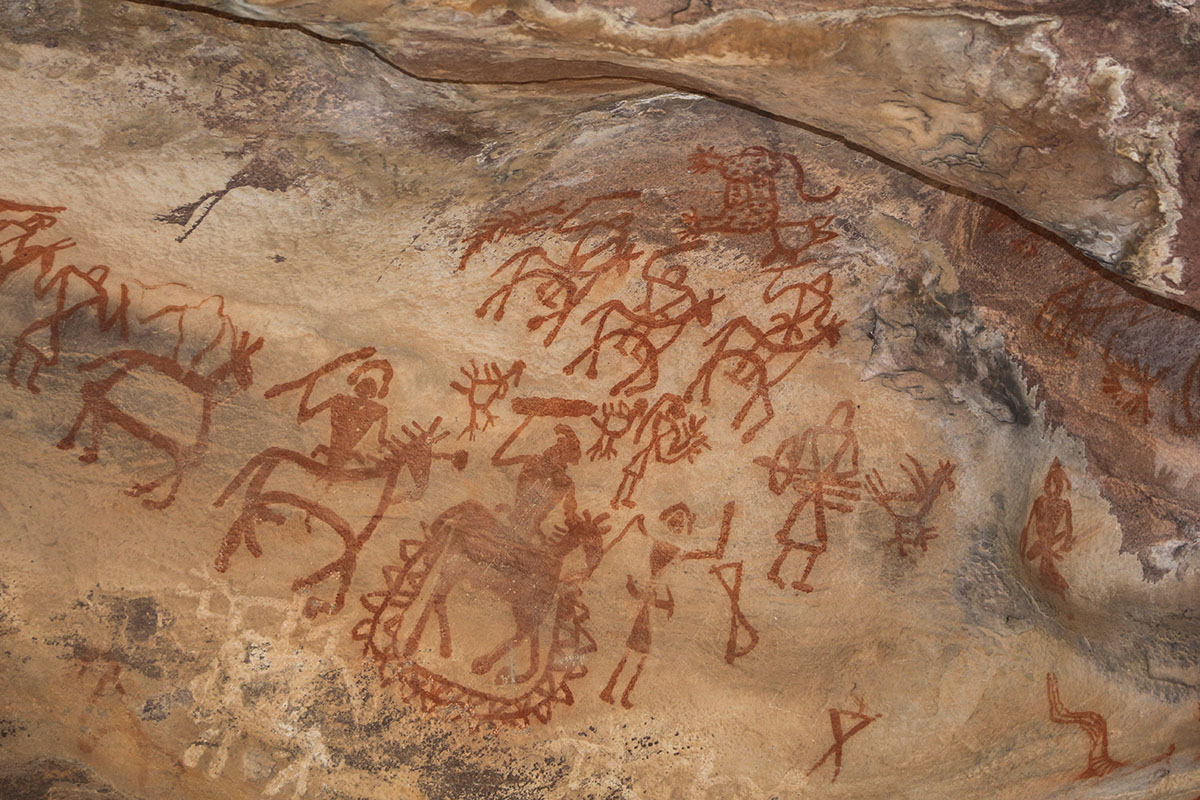
Paintings in Rock Shelter, Bhimbekta India; Bernard Gagnon; c. 2013; Wikimedia Commons
There are more tangible expressions of Indelible India. Art, for one: Bhimbetka to Ajanta, temple murals to palace miniatures, folk and tribal art to bazaar and pilgrimage paintings, Company school to contemporary installations, it is a continuity that defies dating. Then there is music: from Samaved to SaReGaMa, the nation continues to sing. In praise of the gods. Of land. Of love. Of birth, and of death too. Ramayan and Mahabharata are recounted over and again, yielding new interpretations, new vocabulary, new philosophies, as a feminist Naathvati Anaathvat, as anti-nuclear Andha Yug, as an anti-war Chakravyuh.
Geometry, India’s gift to the world, finds ever-new applications – in calculating dimensions as in working out spatial relations. In architecture, in building bridges, flyovers, metros and airports. In computer graphics, in robotics and medicine too. So does our love for the skies. So we keep adding the names of Sunita Williams and Shubhanshu Shukla, Rakesh Sharma and Kalpana Chawla, to those of our ancients, Aryabhatta and Varaha Mihir, Bhaskara and Brahmagupt. People who developed theories about the Earth’s rotation, calculated planetary movements and explored eclipses and gravitational pulls.
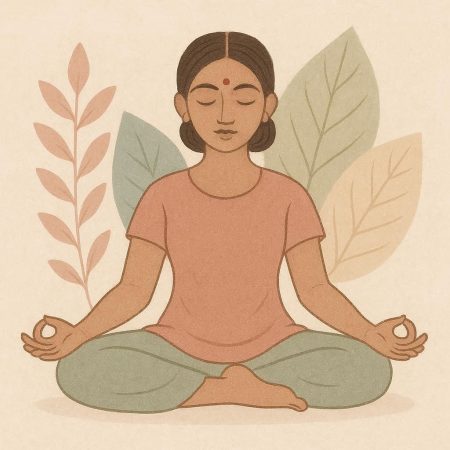
Yoga, the pre-Vedic practice of asanas, has survived the millennia
Yoga, the pre-Vedic practice of asanas, has not only survived the millennia. The discipline of physical, mental and spiritual exercises has gained greater acceptance and respect in the fast paced, super competitive life of new agers as a tool for stress management and clarity of thought and focus.
Sari, six yards of unrivalled elegance, continues to spell dignity in a world that equates unstitched garments with primitivism. India, that swore by neem-chandan-haldi-honey and worshipped Ganga alongside the life-giving energy of Sun, finds a new resonance in the world that recognises the Vedas as world heritage. And Krishna’s philosophy of Karma? Today more than ever before it is recognised as the key to an India that can lead the IT-driven world. Yes, Indians have steered the IT industry globally to gain the leading position in the last decade. By progressively contributing to the growth of exports and creation of employment opportunities. Says who? The National Association of Software and Services Companies.
But not all that has endured is glorious. Casteism is the prime example. What started as a professional classification of society into the four castes of Brahmins, Kshatriyas, Vaishyas and Shudras has grown into a humongous 3000 jatis – subcastes – with regional variations in the Hindu fold. It has not only impacted the social development of SCs and STs. Going beyond the affirmative action sanctioned by the Constitution of India, it has degraded into a curse that is exploited as a political ploy. Why else are people, including Christians and Muslims, demanding reservations and demonstrating to be in a lower caste?
Did you say, “This happens only in India?” Yes, how many times have these words expressed our frustration and exasperation at our failings? But again, is there something more enduring beyond the grotesque contradiction? Let’s take a look at our Kumbh Mela. Where else in this cyber age do people take a dip to absolve themselves of their sins? Yet, can we close our eyes to the faith that brings together in Prayag a record 45 crore – including 15 lakh foreigners – across the divides of caste, creed, sect and class?
Certainly not. For, that is Indelible India.
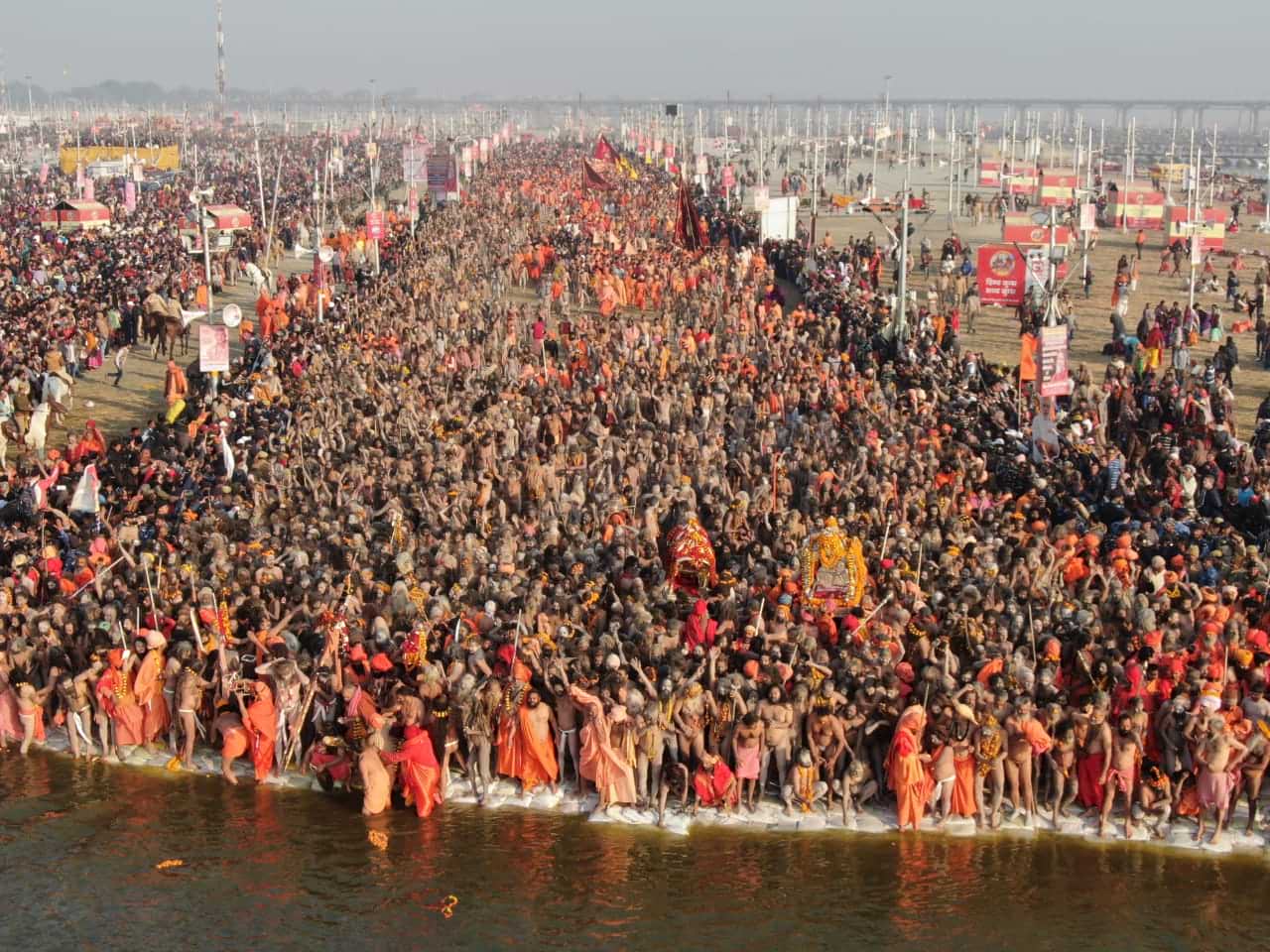
Prayag Maha Kumbh 2025 (Pic: Wikimedia)
More Must Read in LnC
Ba: The Forgotten Mother of the Nation
Shot in Black & White – Treasured in the Heart: Photography by Manobina Roy
A Forgotten Civil Surgeon of India: Dr KD Ghose
The Conflicts in Tagore – Chitrangada Versus Chandalika
We are editorially independent, not funded, supported or influenced by investors or agencies. We try to keep our content easily readable in an undisturbed interface, not swamped by advertisements and pop-ups. Our mission is to provide a platform you can call your own creative outlet and everyone from renowned authors and critics to budding bloggers, artists, teen writers and kids love to build their own space here and share with the world.
When readers like you contribute, big or small, it goes directly into funding our initiative. Your support helps us to keep striving towards making our content better. And yes, we need to build on this year after year. Support LnC-Silhouette with a little amount - and it only takes a minute. Thank you
Got a poem, story, musing or painting you would like to share with the world? Send your creative writings and expressions to editor@learningandcreativity.com
Learning and Creativity publishes articles, stories, poems, reviews, and other literary works, artworks, photographs and other publishable material contributed by writers, artists and photographers as a friendly gesture. The opinions shared by the writers, artists and photographers are their personal opinion and does not reflect the opinion of Learning and Creativity- emagazine. Images used in the posts (not including those from Learning and Creativity's own photo archives) have been procured from the contributors themselves, public forums, social networking sites, publicity releases, free photo sites such as Pixabay, Pexels, Morguefile, etc and Wikimedia Creative Commons. Please inform us if any of the images used here are copyrighted, we will pull those images down.